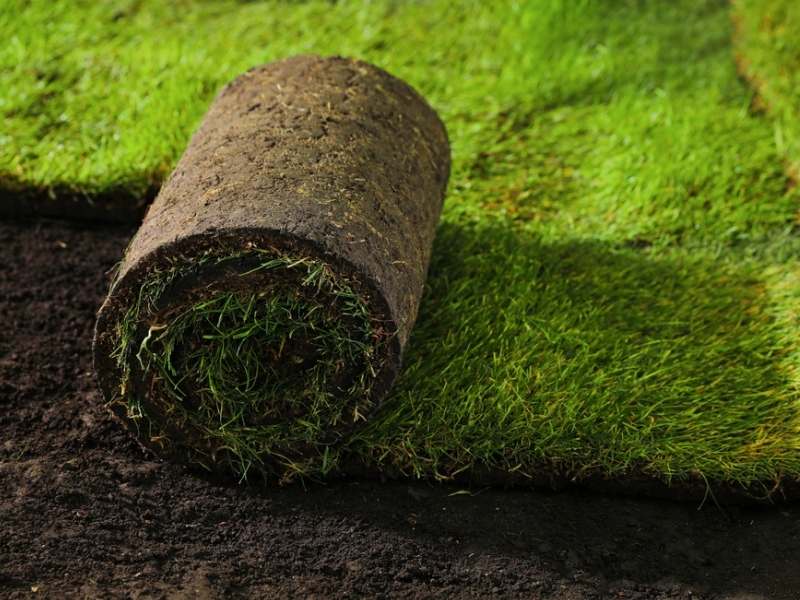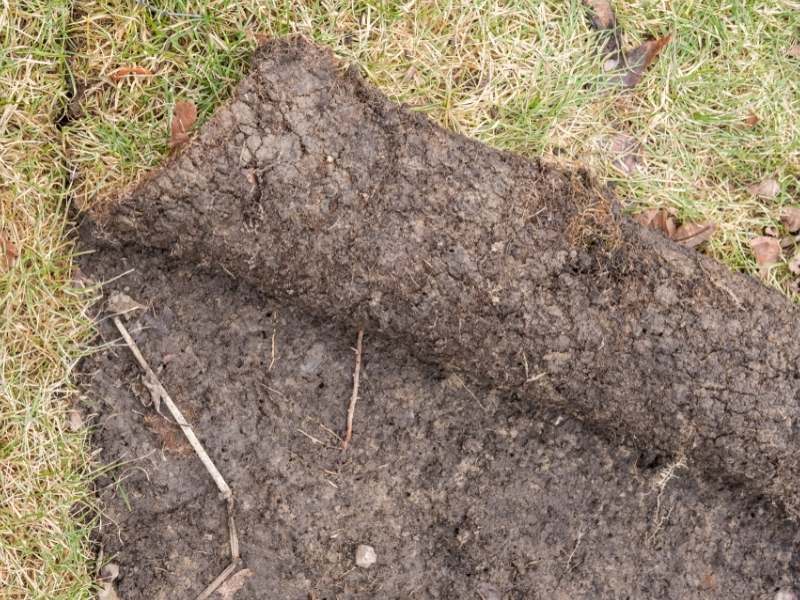Why is My New Sod Turning Brown? Causes + How to Save and Revive It
Dryness, dead spots and discoloration, and thinning are the last things to expect from a newly installed sod. But what does brown spots on your recently-established sod mean? Wondering what the problem could be? Or how can you fix it?
New sod can turn brown due to poor installation, pest infestation, soil compaction, and inadequate water. Excess application of nitrogenous fertilizer, lack of nutrients, and premature mowing are also culprits. Identify the cause first to help save and revive sod through watering, aeration, skipping, correct height mowing and applying appropriate fungicides and pesticides.
In this blog article, I’ve gone through the causes of new sod-turning brown, ways of preventing sod from turning brown, and how to revive brown sod.
Why is my new sod turning brown?
If your newly-installed sod is spotting brown patches/coloration in certain areas, the cause could be any of the factors discussed below:

1. Lack of water
New sod needs more water than established turf to facilitate root establishment and normal growth. If you fail to water your recently-installed sod at least twice a day for the entire first-week post-installation, you risk killing some (if not most) of the developing roots due to insufficient soil water.
This eventually leads to the browning of the leaf blades of the grass plants whose roots are most affected. But how do I water new sod? Failing to soak up at least the top half of the soil every time you irrigate your turfgrass can also result in browning, even if you stick to the aforementioned watering frequency.
2. Excessive soil Nitrogen
If you applied fertilizer to your lawn soil after sod installation, then chances are high that this is the reason your new turfgrass is turning brown (including slow-release fertilizers). Developing root systems of newly-installed sod are normally too shallow to effectively absorb the excessive nitrogen nutrients infused into the soil through fertilizer application.
The excessive fertilizer burns the developing roots, consequently causing the blades of the grass to turn brown. What’s more, when you buy commercial sod, it’s usually pre-fed with ample fertilizer to see it through the anchorage period. Adding more fertilizer- therefore- results in excess.
3. Premature mowing
If you failed to take a root establishment test before your initial mowing and noticed brown spots on your turf, the most likely cause would be mowing too early. Mowing stresses new sod due to the weight of the mower and will result in brown patches if undertaken too soon. But when is the best time to mow a new sod.
4. Soil compaction
Very compact soil inhibits the water from seeping into the soil and the roots of the growing grass. This consequently causes the grass blades to turn brown due to drought/lack of water.
5. Poor Installation
If you installed the sod yourself and have never done this before, the grass is likely turning brown due to improper installation, as the sod probably lacks proper contact with the ground beneath it.
The air pocket left between the sod and the soil inhibits proper intake of moisture and nutrients by the roots, consequently browning the grass blades.
Sometimes, you’ll still have air pockets created between, even after proper installation by professionals due to the soil settling post-installation. You should therefore check for soil settling when diagnosing the causes of brown spots on your new turfgrass.
6. Pest Infestation
Various fungal organisms and insect pests thrive on feeding off newly-grown soft sod that’s still soft. This results in browning as the feed on the blade sap.
Can brown sod be saved?
Yes, brown sod can be saved and restored to its normal, lush, green appearance. The best reviving strategies take into account the cause of browning.

However, as with any problem, prevention is always better than cure, and there exist several ways in which you can prevent your newly-established sod from turning brown, as discussed below:
- To prevent your sod from dying/turning brown due to water deficiency, always ensure to water at the recommended intervals and until the top half of the soil is entirely soaked.
- To prevent your sod from browning due to excessive soil nitrogen, avoid using fertilizers during the root establishment period (typically, the first two weeks post-installation).
- To prevent your sod from turning brown due to air pockets caused by poor installation, avoid DIY sod installation and- instead- contract a landscaping professional to get the job done right.
How do I revive my dying sod?
You have first to identify the causes of new sod growing; you can fix and save your lawn through the following;
- Reviving sod browning due to soil compaction- compact soil is typically too hard and results in poor drainage that causes water to flow away rather than soak into the soil. To revive sod that has turned brown due to too compact soil, use a screwdriver or a similar sharp object to open up holes or aerate your soil, allowing water to drain into the soil and into the roots easily.
- Reviving sod that is browning due to air pockets between the sod and the ground– lift up the parts of the sod that are browning and fill up the space/air pocket between it and the soil with compost or topsoil to establish contact with the soil. This will consequently create a pathway for nutrient absorption through the roots.
- Reviving sod that is browning due to premature mowing– if you had cut your grass too soon, you can revive it by skipping a few scheduled mowings and allowing it to grow a bit taller than usual. This will allow it time to offset the initial negative effects caused by premature mowing.
- Reviving sod browning due to pest infestation– the best way to revive grass under fungal/pest attack is to eliminate the insects/fungi. You can visit your local agricultural extension office for guidelines on the best pesticides and fungicides for grass insect pests and fungi.
See Also: When to start walking on new sod?

